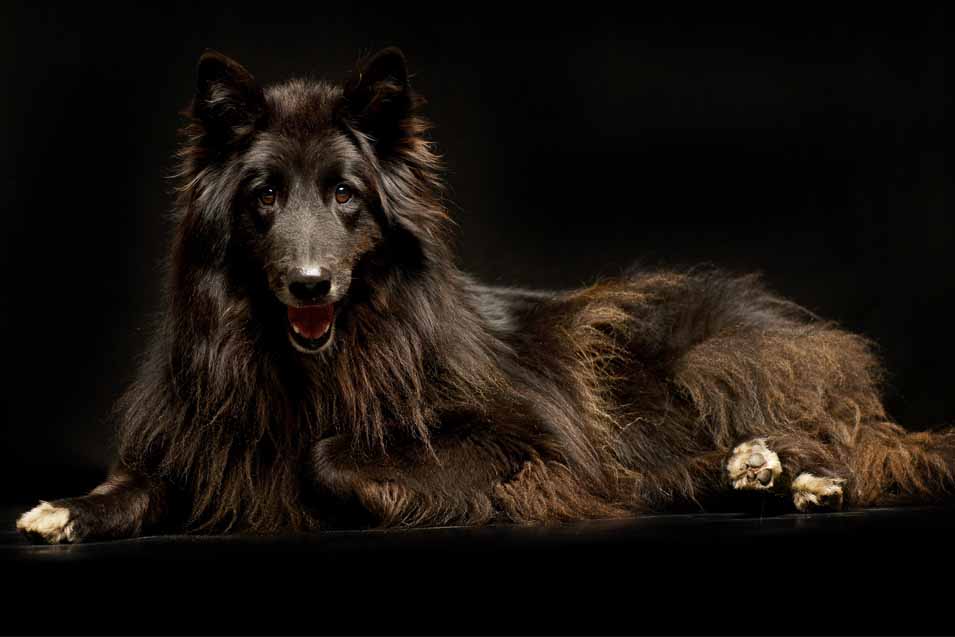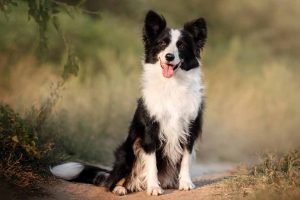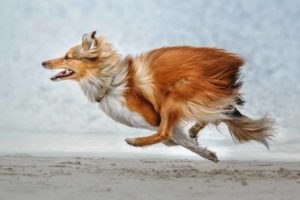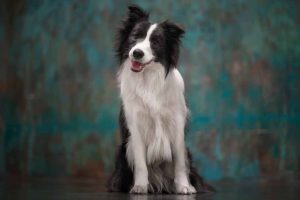Dogs were the first animal domesticated by humans. DNA and fossil evidence shows that humans were already living with dogs at least 15,000 years ago. Research suggests that dogs were domesticated not just once but in multiple locations around the world, by multiple groups of humans. It seems like this was a relationship that was destined to be. It’s little wonder that dogs have been included in our mythologies from earliest times. Virtually every early civilization and ancient religion includes dogs, gods who can appear in the form of a dog (or other animals), and beings that have physical or spiritual parts belonging to dogs.
Here’s a look at some famous dogs in mythology from around the world.
China
China is home to several breeds of dogs today which have DNA dating back some 14,000 years, suggesting that this was one of the places where dogs were first domesticated and where those dogs survived to the present day. The Shar Pei and the Chow Chow are among these oldest dogs. The Shiba Inu and the Akita, from Japan, are likewise ancient. Dogs often accompany heroes in Chinese tales. The dog is one of the twelve symbols in the Chinese zodiac.
Panhu – the dog of the legendary Chinese ruler Di Ku. Panhu helped the ruler win a great battle by killing the enemy general and bringing him his head.
Tiangou – a dog creature. The name means “heavenly dog.” When he gets hungry he devours the sun or moon. This was part of a Chinese myth to explain eclipses.
Foo Dogs – Chinese guardian dogs that resembles a lion. They are often seen as a pair of statues protecting a home or building. Pekingese and other small dogs of Chinese origin are sometimes referred to as Foo Dogs.
Hinduism
Hinduism is one of the world’s oldest religions, dating back more than 4,000 years. It began in India’s Iron Age but encompasses many other regional influences and spread through southeast Asia. This is another area where the dog was domesticated very early. The Afghan Hound, from a mountainous region, is an ancient breed from Afghanistan, a country that borders Pakistan (formerly part of India), Iran, and China, among other countries. There are a number of dogs in Hindu mythology.
Shvan – means dog in Sanskrit.
Sharvara – one of the two dogs that guards the netherworld. Associated with Canis Major. The word “sharvara” means variegated or spotted.
Sarama – The Apsara of Indra, a Vedic god. Depicted as the mother of all wolves.
Rudra, Nirriti, and Virabhadra are all deities associated with dogs.
Shiva – in the form of Bhairava, Shiva had a dog as a vehicle (called a vahana).
Khandoba – a deity associated with the dog he rides.
Dattatreya – associated with four dogs that are considered to symbolize the four Vedas or the most ancient Hindu scriptures.
Tihar – a Hindu festival (Nepal). On the second day (Kukur Tihar) dogs are celebrated during Dog Tihar.
Egypt
Land of the Pharaohs, Egypt was also home to a vast array of gods, many of which are still known today thanks to archaeology, films, and fiction. Tomb walls show the likenesses of dogs that resemble the Pharaoh Hound and the Ibizan Hound, though these two breeds are not ancient. Bedouins still use Salukis to hunt in the desert. According to some sources, there are pedigrees for Salukis that date back over 4000 years. DNA evidence suggests that Salukis are one of the oldest of all breeds, dating back some 14,000 years. Basenjis, another sighthound, are from Africa, and also one of the oldest breeds. Many of the kinds of dogs we have today were known and kept in ancient Egypt including the Basenji, the Greyhound, the Saluki, molosser dogs (mastiff types), dogs that resembled the Pharaoh Hound and Ibizan Hound, some kind of small hound dog for hunting, and small pet dogs. Egyptians were very fond of dogs and kept them for hunting, as guard dogs, and as pets.
Anubis – a god of death and the afterlife, is portrayed with the head of a dog or jackal. His sacred animal was an Egyptian canid or African golden wolf. Anubis was clothed in black.
Wepwawet – brother of Anubis. Wepwawet also had the head of a dog. Wepwawet had grey or white fur.
Set (or Seth) – the brother of the god Osiris, Set had the physical form of a man with the head of a canine. Set is sometimes described as having a long tail, curved muzzle, and erect ears, making him look like a combination of a fox, jackal, donkey, and other animals.
Duamutef – the son of Horus. Duamutef was another god associated with death and the afterlife. His image often guarded canopic jars in tombs.
The Celts
Not a land but a people, the Celts migrated across Europe and through the British Isles between 1200 B.C. and the time of the Roman invasion of Britain in 43 A.D. While there were many different tribes and different names for some of their gods, the Celtic culture was consistent across much of Europe and the British Isles for centuries. Celts were known as a horse culture but many of their myths and legends also feature dogs. Greyhounds are attributed to Celtic breeding , along with the Irish Wolfhound and the Scottish Deerhound.
Setanta – Irish hero who killed a giant guard dog in self-defense. He took the dog’s place to guard Ireland.
Cú Chulainn – Setanta’s name after he became the guardian of Ireland in place of the dog that he killed.
Bran – one of the dogs of the warrior-poet Fionn mac Cumhaill.
Sceolan – one of the dogs of the warrior-poet Fionn mac Cumhaill.
Gelert – the hound of Prince Llewellyn (Welsh). The dog was unjustly killed by his master when it was thought he had killed a child. (There are other versions of this story. In Wales the story concerns Rhiannon, a goddess of the moon associated with horses.)
Epona – Epona is mostly a goddess associated with horses and foals and even with the military (since they rode horses). Even Romans paid tribute to her. But in some depictions she is shown with dogs, too. Epona was widely known throughout the Celtic world though she was especially popular in Gaul (France). Epona is sometimes associated with Rhiannon in Wales.
Nuada – also called Nodens or Nudd, Nuada was a Celtic god of healing. He was associated with dogs since it was believed that a dog licking a wound could help to cure it (don’t try this at home).
The Greeks and Romans
Most people are familiar with elements of Greek and Roman mythology. They have come down to us as part of Western culture. Greece was the older culture, though Rome’s early history draws on the Etruscans and earlier people. Rome took over much of Greece’s mythology and their stories became entwined. As for deities , dogs or hounds are associated with the goddesses Hecate (the underworld) and with Artemis (hunting).
Romulus and Remus – according to legend, Rome was founded by the twins, Romulus and Remus, who were suckled by a she-wolf.
Argus – Odysseus’s dog. Argus waited faithfully for 20 years for Odysseus to return from the siege of Troy and died as soon as he came home.
Laelaps – a dog that protects Zeus as a baby.
Cerberus – the three-headed dog that guards the gates of Hades.
Trivia – Roman goddess of ghosts, haunted crossroads, and graveyards. Dogs were associated with her because it was believed that dogs that were barking at “nothing” were warning of her approach.
Mesoamerica
Mesoamerica was the home to several remarkable civilizations from about 3500 B.C. until the Spanish Conquest in 1521 A.D. (Even now there are still an estimated seven million people of Mayan descent living in central Mexico.) The Olmec, the Toltecs, the Mayans, and the Aztec all had dogs as part of their cultures. Dogs filled many roles for the peoples of Mesoamerica. They were a food source at times but they were also healers, guardians, pets, hunters, and they were thought to guide the soul in the afterlife. The Xoloitzcuintli is a hairless dog from Mesoamerica. Archaeological evidence has shown that the Xoloitzcuintli probably dates back some 3500 years.
The ancient dog which accompanied the ancestors of Native Americans from Siberia to North America (and subsequently down to central and South America) is thought to be extinct.
Xolotl – the Aztec god of death that was pictured as a huge dog.
The Norse
Norse mythology includes stories and early religious beliefs of north Germanic and Scandinavian peoples. The time period includes but the pagan and early Christian eras. Some of the Old Norse texts that pass on the stories are thought to be from Iceland where an oral tradition kept the pre-Christian tales and sagas alive into the Middle Ages. Dogs were an important part of Norse culture, acting as guardians, hunters, herders, and in some locales pulling sleds. DNA evidence shows that the Siberian Husky and the Alaskan Malamute are both ancient breeds. The Norwegian Elkhound claims a direct Scandinavian origin dating back to ancient times. Many spitz breeds use in Scandinavian countries for herding and sled pulling likely have very early roots. Dogs were often buried with their people so they could protect and guide them in the afterlife. Dogs would also feast at the feet of their warrior masters in Valhalla after death.
Garm – also called Garmr is a wolf or dog associated with Hel and Ragnorok. He is described as a blood-stained guardian of Hel’s gate. He kept the dead souls inside and the living out.
Frigg – Odin’s consort. She is associated with dogs since she is often seen in a chariot pulled by dogs.







One Response
Dogs are among the best creatures in the world. Even though there are many ancient dogs in Chinese mythology, they are still eating dog meat and skinning them alive for fur. Its so sad.